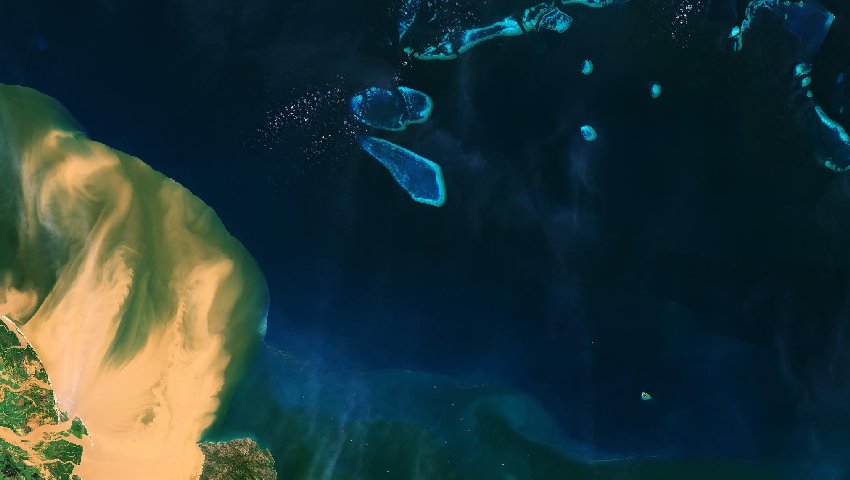Researchers observed this vertical migration pattern using the Cloud-Aerosol Lidar and Infrared Pathfinder Satellite Observations (CALIPSO) satellite – a joint venture between NASA and the French space agency, Centre National d'Etudes Spatiales – that launched in 2006.
The researchers published their findings in the journal Nature on Wednesday.
Chris Hostetler, a scientist at NASA's Langley Research Center in Hampton, Virginia, said, "This is the latest study to demonstrate something that came as a surprise to many: that lidars have the sensitivity to provide scientifically useful ocean measurements from space."
The study looks at a phenomenon known as diel vertical migration (DVM), in which small sea creatures swim up from the deep ocean at night to feed on phytoplankton near the surface, then return to the depths just before sunrise.
Scientists recognise this natural daily movement around the world as the largest migration of animals on Earth in terms of total number.
"I think we are just scratching the surface of exciting new ocean science that can be accomplished with lidar," Hostelter added further.
The cumulative effect of daily vertically migrating creatures on Earth's climate is significant. During the day, ocean phytoplankton photosynthesise and, in the process, absorb significant amounts of carbon dioxide, which contributes to the ocean's ability to absorb the greenhouse gas from the atmosphere.
Animals that undergo DVM come up to the surface to feed on phytoplankton near the ocean’s surface and then swim back down, taking the phytoplankton carbon with them. Much of this carbon is then defecated at depths where it is effectively trapped deep in the ocean, preventing its release back into the atmosphere.
Mike Behrenfeld, the lead for the study and a senior research scientist and professor at Oregon State University in Corvallis, Oregon, said, "What the lidar from space allowed us to do is sample these migrating animals on a global scale every 16 days for 10 years.
"We've never had anywhere near that kind of global coverage to allow us to look at the behaviour, distribution and abundance of these animals."
Zeroing in on tropical and subtropical ocean regions, researchers found that while there are fewer vertically migrating animals in lower-nutrient and clearer waters, they comprise a greater fraction of the total animal population in these regions.
The satellite data are also relevant to global fisheries because the migrating animals are an important food source for larger predators that lurk in the depths of the ocean.
Those predators are often species of fish that are attractive to commercial fisheries. The larger the DVM signal, the larger the population of fish that can live in the deep sea.
Though CALIPSO's laser was designed to measure clouds and atmospheric aerosols, it can penetrate the upper 20 meters of the ocean's surface layer. If the migrating animals reach this layer, they are detected by CALIPSO.
NASA uses the vantage point of space to understand and explore our home planet, improve lives and safeguard our future. The agency’s observations of Earth’s complex natural environment are critical to understanding how our planet’s natural resources and climate are changing now and could change in the future.

